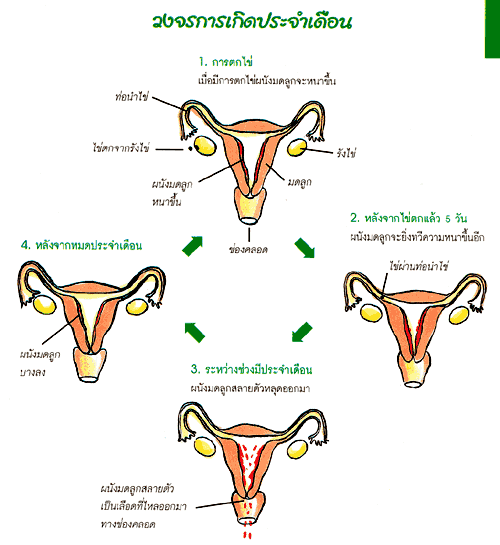Menstruation, which many women often refer to or know as “period” or “menses,” usually occurs alongside physical changes that give women a distinct body shape and body odor different from men. This is due to substances produced in women’s bodies that differ from those in men. These substances also result in menstruation in women.
Typically, girls have their first period around the age of 11 – 15 when they enter puberty. The two ovaries attached to the uterus will fully mature and be ready to release an egg every month.
Normally, an egg is released from the ovaries once a month, alternating sides each month. When the egg is released, it moves into the fallopian tube and implants itself in the uterine wall, which thickens as it accumulates various nutrients to nourish the embryo. If the egg is not fertilized by sperm, the lining will shed as menstruation, which occurs once a month and flows out through the vagina, which is separate from the urethra.

Most women have their period every 28 days, with a possible variation of more or less than 7 days, and it usually lasts 3-7 days each time. During menstruation, sanitary pads should be changed every 3-4 hours, and the external genital area should be cleaned with water and soap to maintain sufficient hygiene to prevent abnormalities in the reproductive system and to prevent accumulation and odor. Menstrual blood, which sometimes comes out in clots, often has an odor when exposed to the outside air.
Menstruation is not waste blood expelled by the body, as many people understand, but it indicates that our reproductive system is functioning normally and also informs us that we are not pregnant.
